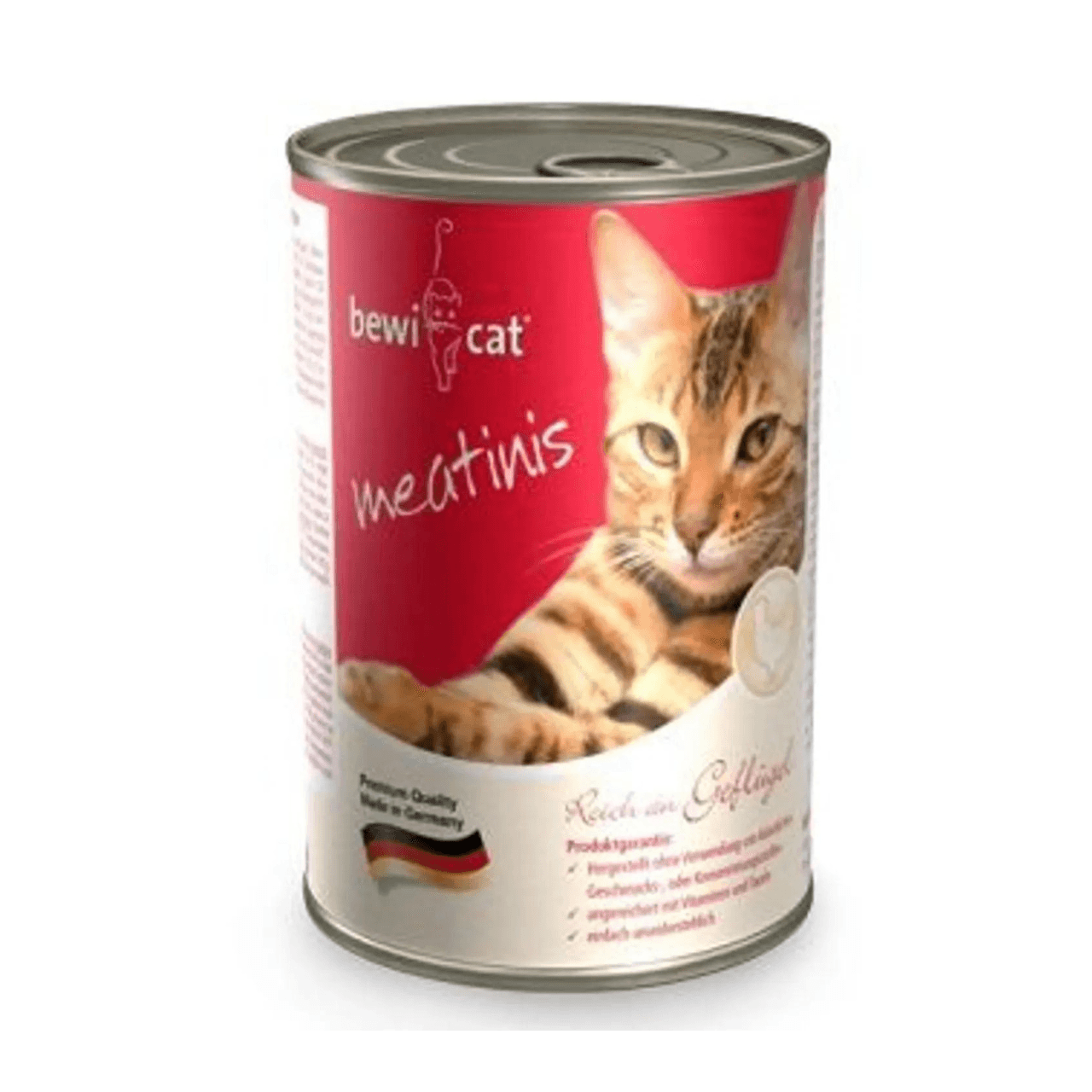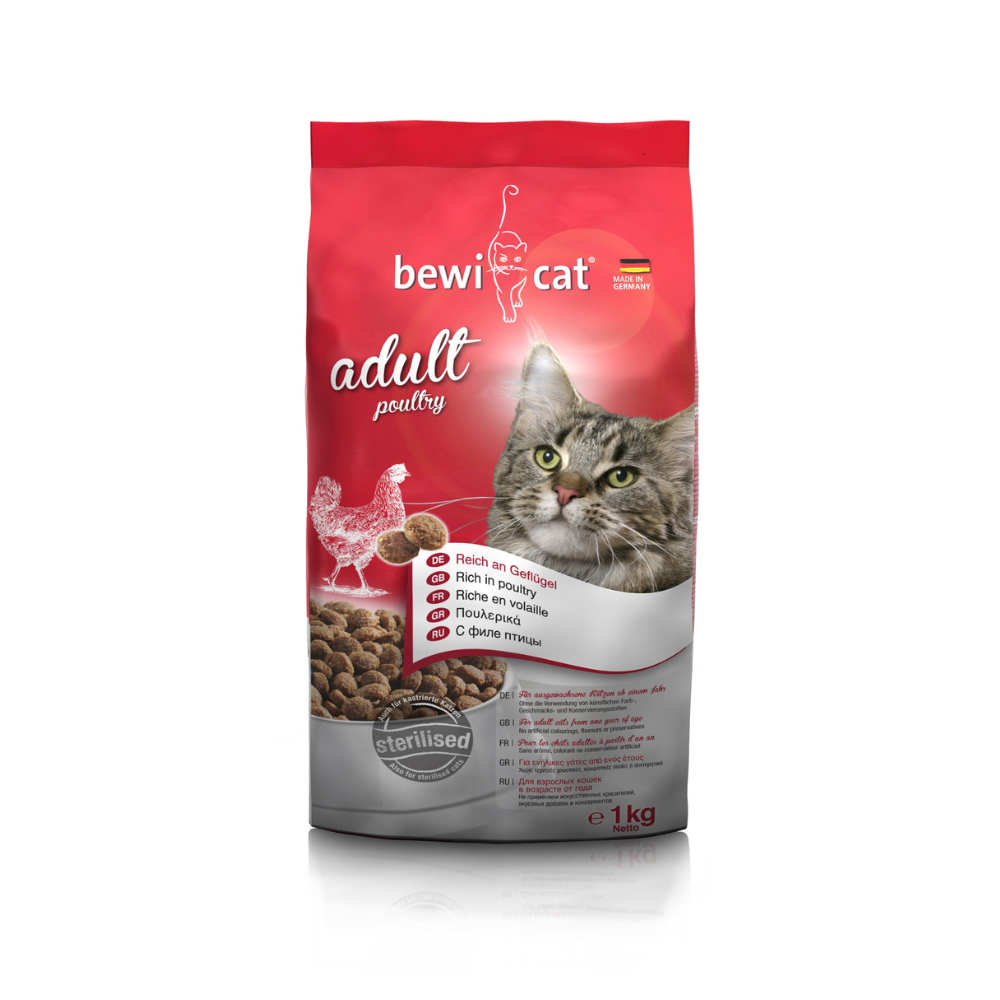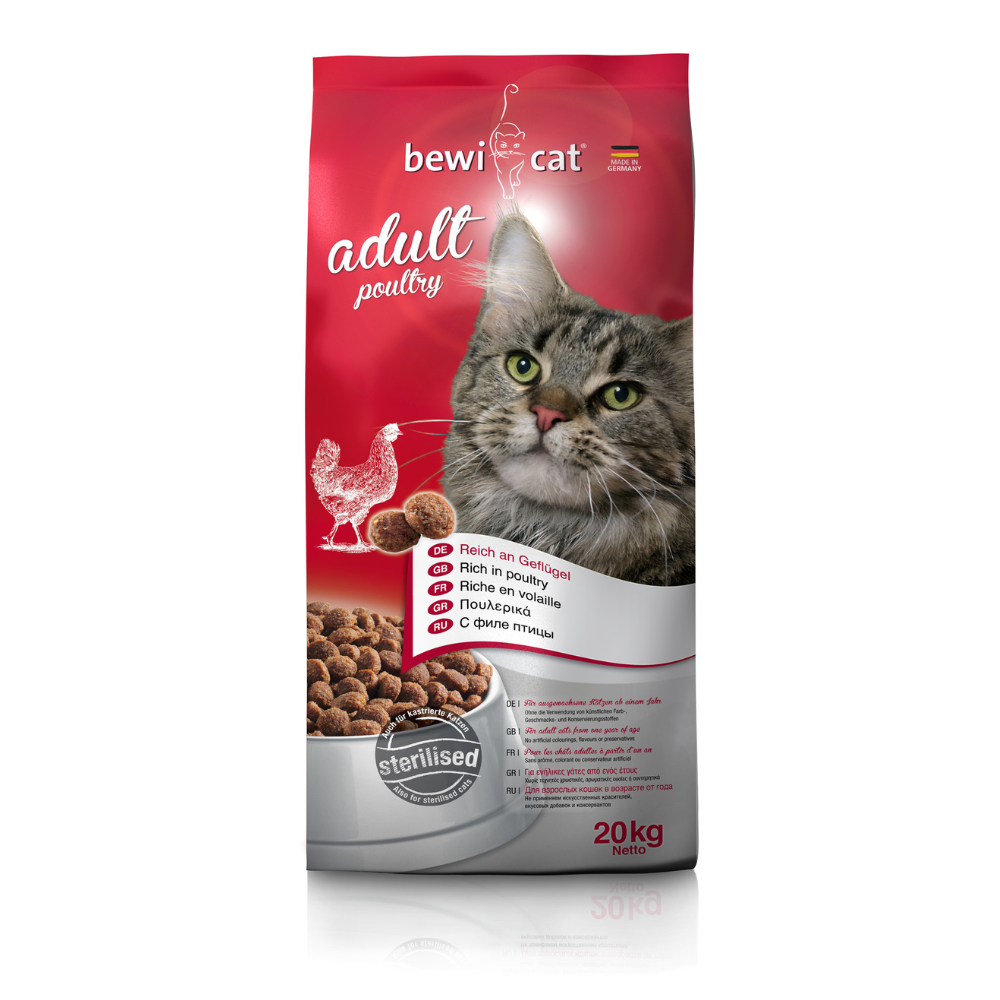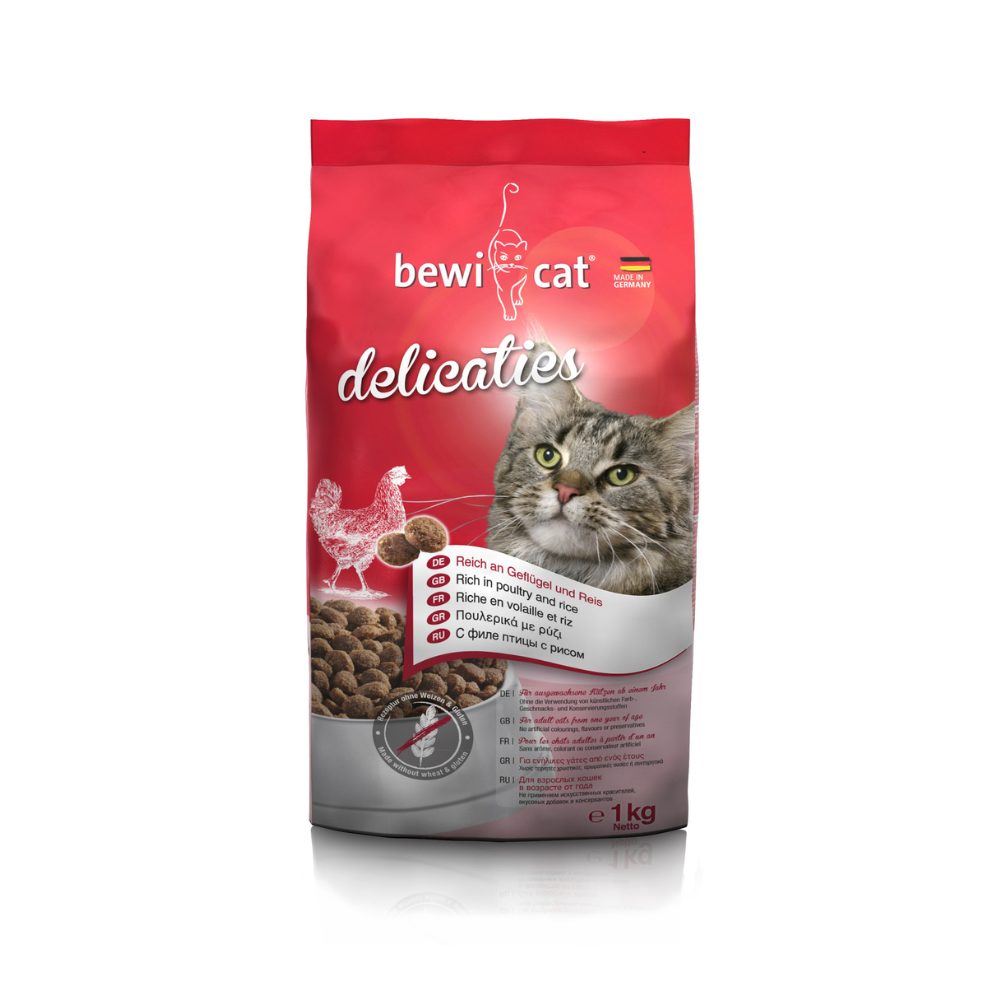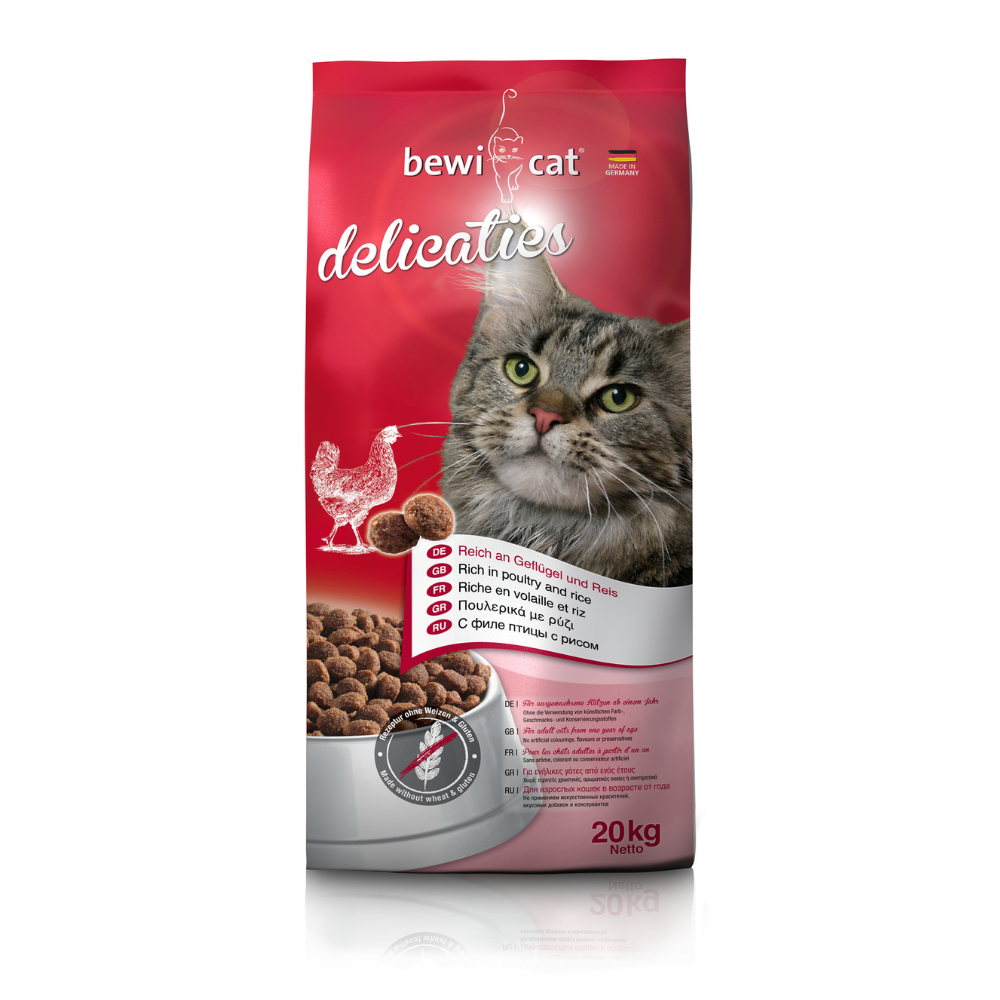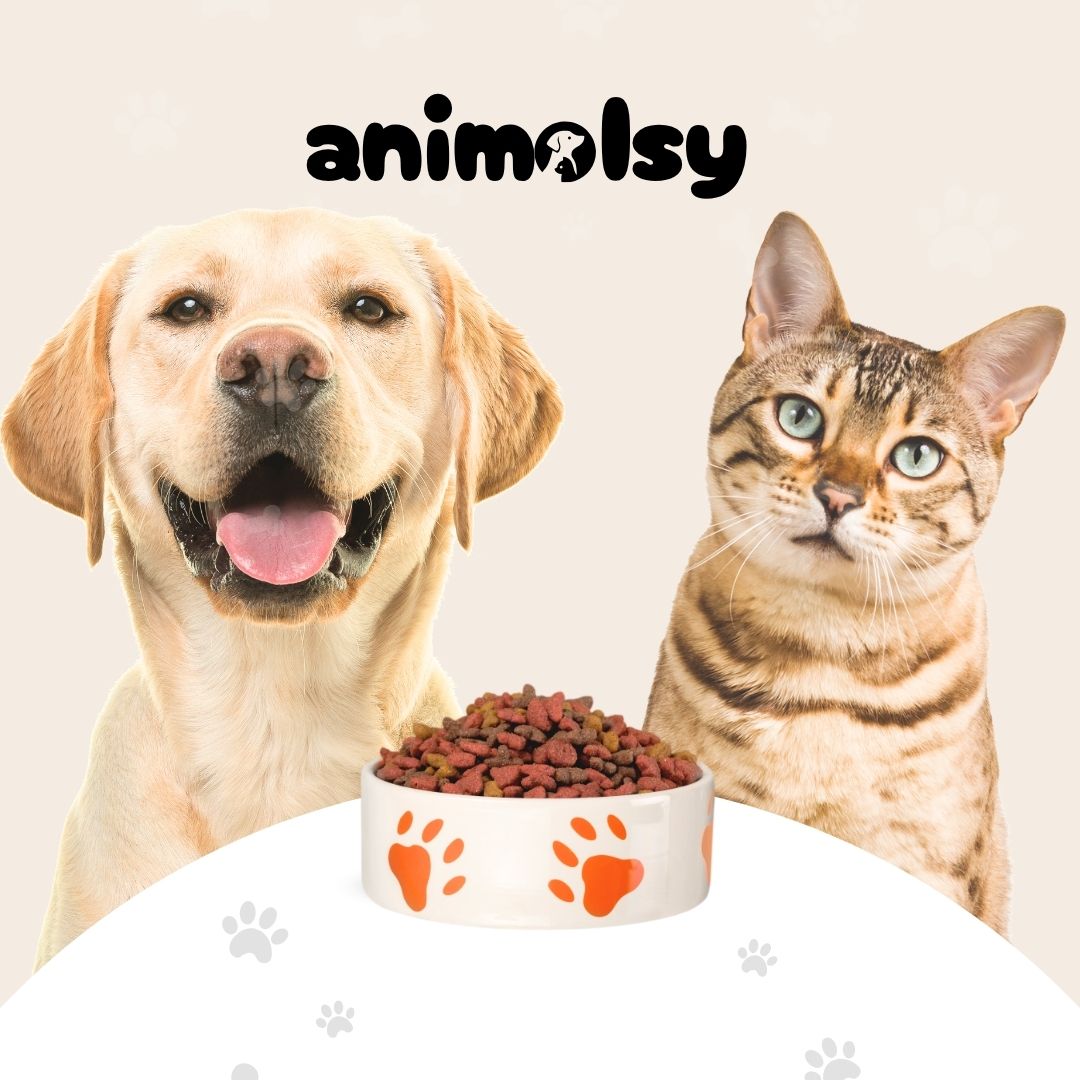Nutri Pet Score
NutriPetScore: Definición y Propósito
NutriPetScore es un sistema de puntuación desarrollado para evaluar la calidad nutricional de los alimentos húmedos completos para gatos. Este sistema tiene como objetivo proporcionar una guía objetiva a los dueños de mascotas para elegir alimentos de alta calidad para sus gatos, teniendo en cuenta varios parámetros nutricionales y la transparencia de los ingredientes.
Objetivos del NutriPetScore
- Informar a los Consumidores: Ayudar a los dueños de gatos a tomar decisiones informadas sobre la calidad nutricional de los alimentos húmedos disponibles en el mercado.
- Fomentar la Transparencia: Incentivar a las marcas a ofrecer información clara y detallada sobre la composición de sus productos.
- Promover una Alimentación Adecuada: Asegurar que los gatos reciban una dieta equilibrada y nutritiva adecuada a sus necesidades alimenticias.
Criterios y Proceso de Cálculo del NutriPetScore
El NutriPetScore se calcula siguiendo una serie de pasos detallados, teniendo en cuenta la composición nutricional y los ingredientes del alimento. A continuación se describe el proceso de cálculo:
- Nutrientes Clave:
- Proteínas: Deben estar dentro del rango ideal de 26% a 66% en base seca. Las proteínas son cruciales para el crecimiento y la reparación de tejidos.
- Grasas: Deben estar dentro del rango de 9% a 28% en base seca. Proporcionan energía y ácidos grasos esenciales.
- Cenizas (Ash): Idealmente entre 9% y 14.9% en base seca, indicando la cantidad de minerales.
- Carbohidratos: Deben estar entre 0% y 12.9% en base seca. Los gatos requieren bajos niveles de carbohidratos.
- Conversión a Base Seca (DMB):
- Los valores de los nutrientes en base húmeda se convierten a base seca para una comparación precisa utilizando la fórmula: Valor en DMB=(Valor en base huˊmeda100−Humedad)×100\text{Valor en DMB} = \left( \frac{\text{Valor en base húmeda}}{100 - \text{Humedad}} \right) \times 100Valor en DMB=(100−HumedadValor en base huˊmeda)×100
- Cálculo de Puntuaciones:
- Cada nutriente recibe una puntuación de 10 si está dentro del rango ideal.
- Si un nutriente está fuera del rango ideal, la puntuación se ajusta proporcionalmente: Puntuacioˊn de grasa=(Lıˊmite superior del rango idealValor calculado)×5+5\text{Puntuación de grasa} = \left( \frac{\text{Límite superior del rango ideal}}{\text{Valor calculado}} \right) \times 5 + 5Puntuacioˊn de grasa=(Valor calculadoLıˊmite superior del rango ideal)×5+5
- Penalizaciones por Ingredientes:
- Frutas y Verduras: Penalización proporcional a su porcentaje en el producto. Si el porcentaje es superior al 10%, se aplica una penalización del 20%.
- Ingredientes No Deseados: Penalización del 10% por cada ingrediente no deseado, como almidones, azúcares, y gomas.
- Pescados y Subproductos de Pescado: Penalización del 20% a 40% dependiendo de su porcentaje, con excepciones como el aceite de salmón y el mejillón de labio verde.
- Transparencia en la Etiqueta:
- Se penaliza la falta de transparencia en la descripción de ingredientes (ej. "carnes y subproductos animales" sin especificar).
- Cálculo de la Puntuación Final:
- La puntuación total se calcula promediando las puntuaciones de los nutrientes y aplicando cualquier penalización:
Puntuacioˊn Final=Proteıˊnas+Grasas+Cenizas+Carbohidratos4\text{Puntuación Final} = \frac{\text{Proteínas} + \text{Grasas} + \text{Cenizas} + \text{Carbohidratos}}{4}Puntuacioˊn Final=4Proteıˊnas+Grasas+Cenizas+Carbohidratos
- Las penalizaciones se aplican multiplicando la puntuación total por (1 - penalización total).
Ejemplo de Cálculo
Supongamos un producto con la siguiente composición:
- Ingredientes: 80% carne de pollo, 15% caldo de pollo, 5% minerales.
- Componentes Analíticos:
- Proteínas: 14%
- Grasas: 6%
- Cenizas: 2%
- Fibras: 0.5%
- Humedad: 78%
Paso 1: Calcular los Carbohidratos Carbohidratos=100−(14+6+2+0.5+78)=0.5%\text{Carbohidratos} = 100 - (14 + 6 + 2 + 0.5 + 78) = 0.5\%Carbohidratos=100−(14+6+2+0.5+78)=0.5%
Paso 2: Convertir a Base Seca (DMB)
Proteıˊnas (DMB)=(1422)×100≈63.64%\text{Proteínas (DMB)} = \left( \frac{14}{22} \right) \times 100 \approx 63.64\% Proteıˊnas (DMB)=(2214)×100≈63.64% Grasas (DMB)=(622)×100≈27.27%\text{Grasas (DMB)} = \left( \frac{6}{22} \right) \times 100 \approx 27.27\% Grasas (DMB)=(226)×100≈27.27% Cenizas (DMB)=(222)×100≈9.09%\text{Cenizas (DMB)} = \left( \frac{2}{22} \right) \times 100 \approx 9.09\% Cenizas (DMB)=(222)×100≈9.09% Carbohidratos (DMB)=(0.522)×100≈2.27%\text{Carbohidratos (DMB)} = \left( \frac{0.5}{22} \right) \times 100 \approx 2.27\% Carbohidratos (DMB)=(220.5)×100≈2.27%
Paso 3: Puntuación de Nutrientes
- Proteínas: 10
- Grasas: 10
- Cenizas: 10
- Carbohidratos: 10
Paso 4: Penalizaciones
- No hay ingredientes penalizadores.
Paso 5: Calcular Puntuación Final
Puntuacioˊn Final=10+10+10+104=10\text{Puntuación Final} = \frac{10 + 10 + 10 + 10}{4} = 10 Puntuacioˊn Final=410+10+10+10=10
Consideraciones Adicionales
- Rotación de Alimentos: Se recomienda cambiar entre marcas para asegurar una dieta variada.
- Procedencia de Materias Primas: No se tiene en cuenta la procedencia de las materias primas.
- Individualidad de Cada Gato: Las necesidades específicas del gato deben considerarse.
El NutriPetScore es una herramienta útil para evaluar la calidad nutricional de los alimentos húmedos para gatos, pero debe ser complementada con la evaluación de otros factores, como la salud del gato y las recomendaciones veterinarias.
PetScore: Definición y Reglas
PetScore es un sistema de puntuación diseñado para evaluar la calidad nutricional de los alimentos húmedos para gatos, basándose en parámetros específicos definidos por estándares nutricionales para gatos. Este sistema tiene en cuenta la composición de nutrientes del producto, la transparencia de los ingredientes y la presencia de ingredientes no deseados.
Reglas y Criterios para Evaluar el PetScore
- Nutrientes Clave:
- Proteínas: Deben estar dentro del rango ideal de 26% - 66% (base seca).
- Grasas: Deben estar dentro del rango ideal de 9% - 28% (base seca).
- Cenizas (Ash): Deben estar dentro del rango ideal de 9% - 14.9% (base seca).
- Carbohidratos: Deben estar dentro del rango ideal de 0% - 12.9% (base seca).
- Conversión a Base Seca (DMB):
- Los valores en base húmeda se convierten a base seca usando la siguiente fórmula: Valor en DMB=(Valor en base huˊmeda100−Humedad)×100\text{Valor en DMB} = \left( \frac{\text{Valor en base húmeda}}{100 - \text{Humedad}} \right) \times 100Valor en DMB=(100−HumedadValor en base huˊmeda)×100
- Penalizaciones por Ingredientes:
- Frutas y Hortalizas: Si están presentes en una proporción superior al 10%, se penaliza un 10%.
- Extractos de proteínas vegetales, azúcares, carragenina, y otros ingredientes no deseados: Se penaliza un 20%.
- Pescados y subproductos de pescado (excepto aceite de salmón y mejillón de labio verde):
- Más del 50% del producto: Penalización del 40%.
- Entre 30% y 50%: Penalización del 30%.
- Menos del 30%: Penalización del 20%.
- Transparencia en la Etiqueta:
- Se penaliza la falta de transparencia en la descripción de ingredientes (por ejemplo, "carnes y subproductos animales" sin especificar el tipo y porcentaje de cada ingrediente).
Ejemplo de Cálculo del PetScore
Paso 1: Composición y Análisis de los Componentes
- Proteínas: 14.0%
- Grasas: 3.0%
- Cenizas: 2.0%
- Fibras: 0.9%
- Humedad: 75.0%
- Carbohidratos: 100−(14.0+3.0+2.0+0.9+75.0)=5.1%100 - (14.0 + 3.0 + 2.0 + 0.9 + 75.0) = 5.1\%100−(14.0+3.0+2.0+0.9+75.0)=5.1%
Paso 2: Convertir a Base Seca (DMB)
- Proteínas: (14.025)×100≈56%\left( \frac{14.0}{25} \right) \times 100 \approx 56\%(2514.0)×100≈56%
- Grasas: (3.025)×100≈12%\left( \frac{3.0}{25} \right) \times 100 \approx 12\%(253.0)×100≈12%
- Cenizas: (2.025)×100≈8%\left( \frac{2.0}{25} \right) \times 100 \approx 8\%(252.0)×100≈8%
- Fibras: (0.925)×100≈3.6%\left( \frac{0.9}{25} \right) \times 100 \approx 3.6\%(250.9)×100≈3.6%
- Carbohidratos: (5.125)×100≈20.4%\left( \frac{5.1}{25} \right) \times 100 \approx 20.4\%(255.1)×100≈20.4%
Paso 3: Puntuación de Nutrientes
- Proteínas: 10 (dentro del rango ideal)
- Grasas: 10 (dentro del rango ideal)
- Cenizas: (89)×5+5≈8.44\left( \frac{8}{9} \right) \times 5 + 5 \approx 8.44(98)×5+5≈8.44
- Carbohidratos: (12.920.4)×5+5≈8.16\left( \frac{12.9}{20.4} \right) \times 5 + 5 \approx 8.16(20.412.9)×5+5≈8.16
Paso 4: Aplicar Penalizaciones
- Sin penalizaciones adicionales (no hay ingredientes penalizadores)
Resultado Final
- Puntuación total sin penalizaciones: (10+10+8.44+8.16)4=9.15\frac{(10 + 10 + 8.44 + 8.16)}{4} = 9.154(10+10+8.44+8.16)=9.15
Conclusión
El PetScore se basa en un análisis exhaustivo de los nutrientes clave, la transparencia de la etiqueta y la ausencia de ingredientes no deseados. Este sistema de puntuación permite evaluar de manera objetiva la calidad nutricional de los alimentos húmedos para gatos, ayudando a los dueños de mascotas a tomar decisiones informadas sobre la alimentación de sus gatos.
2/2
4o
hay que añadir a que debido a la falta de información en los etiquetados de los productos no somos capaces de analizar el calcio, fosforo, la relacion ca:p y algunos de los ingredientes que puedan contener y que no tengan obligación de facilitar en la información. Por otro lado, hay que recalcar que el nutripetscore solo sirve en alimentación húmeda completa para gatos, y que no debe tomarse como la única forma de valorar un alimento
PetScore: Definición y Reglas
PetScore es un sistema de puntuación diseñado para evaluar la calidad nutricional de los alimentos húmedos completos para gatos, basándose en parámetros específicos definidos por estándares nutricionales para gatos. Este sistema tiene en cuenta la composición de nutrientes del producto, la transparencia de los ingredientes y la presencia de ingredientes no deseados.
Reglas y Criterios para Evaluar el PetScore
- Nutrientes Clave:
- Proteínas: Deben estar dentro del rango ideal de 26% - 66% (base seca).
- Grasas: Deben estar dentro del rango ideal de 9% - 28% (base seca).
- Cenizas (Ash): Deben estar dentro del rango ideal de 9% - 14.9% (base seca).
- Carbohidratos: Deben estar dentro del rango ideal de 0% - 12.9% (base seca).
- Conversión a Base Seca (DMB):
- Los valores en base húmeda se convierten a base seca usando la siguiente fórmula: Valor en DMB=(Valor en base huˊmeda100−Humedad)×100\text{Valor en DMB} = \left( \frac{\text{Valor en base húmeda}}{100 - \text{Humedad}} \right) \times 100Valor en DMB=(100−HumedadValor en base huˊmeda)×100
- Penalizaciones por Ingredientes:
- Frutas y Hortalizas: Si están presentes en una proporción superior al 10%, se penaliza un 10%.
- Extractos de proteínas vegetales, azúcares, carragenina, y otros ingredientes no deseados: Se penaliza un 20%.
- Pescados y subproductos de pescado (excepto aceite de salmón y mejillón de labio verde):
- Más del 50% del producto: Penalización del 40%.
- Entre 30% y 50%: Penalización del 30%.
- Menos del 30%: Penalización del 20%.
- Transparencia en la Etiqueta:
- Se penaliza la falta de transparencia en la descripción de ingredientes (por ejemplo, "carnes y subproductos animales" sin especificar el tipo y porcentaje de cada ingrediente).
- Calcio y Fósforo:
- Debido a la falta de información en los etiquetados de los productos, no siempre somos capaces de analizar los niveles de calcio, fósforo y la relación Ca
, que son nutrientes esenciales para la salud de los gatos.
Ejemplo de Cálculo del PetScore
Paso 1: Composición y Análisis de los Componentes
- Proteínas: 14.0%
- Grasas: 3.0%
- Cenizas: 2.0%
- Fibras: 0.9%
- Humedad: 75.0%
- Carbohidratos: 100−(14.0+3.0+2.0+0.9+75.0)=5.1%100 - (14.0 + 3.0 + 2.0 + 0.9 + 75.0) = 5.1\%100−(14.0+3.0+2.0+0.9+75.0)=5.1%
Paso 2: Convertir a Base Seca (DMB)
- Proteínas: (14.025)×100≈56%\left( \frac{14.0}{25} \right) \times 100 \approx 56\%(2514.0)×100≈56%
- Grasas: (3.025)×100≈12%\left( \frac{3.0}{25} \right) \times 100 \approx 12\%(253.0)×100≈12%
- Cenizas: (2.025)×100≈8%\left( \frac{2.0}{25} \right) \times 100 \approx 8\%(252.0)×100≈8%
- Fibras: (0.925)×100≈3.6%\left( \frac{0.9}{25} \right) \times 100 \approx 3.6\%(250.9)×100≈3.6%
- Carbohidratos: (5.125)×100≈20.4%\left( \frac{5.1}{25} \right) \times 100 \approx 20.4\%(255.1)×100≈20.4%
Paso 3: Puntuación de Nutrientes
- Proteínas: 10 (dentro del rango ideal)
- Grasas: 10 (dentro del rango ideal)
- Cenizas: (89)×5+5≈8.44\left( \frac{8}{9} \right) \times 5 + 5 \approx 8.44(98)×5+5≈8.44
- Carbohidratos: (12.920.4)×5+5≈8.16\left( \frac{12.9}{20.4} \right) \times 5 + 5 \approx 8.16(20.412.9)×5+5≈8.16
Paso 4: Aplicar Penalizaciones
- Sin penalizaciones adicionales (no hay ingredientes penalizadores)
Resultado Final
- Puntuación total sin penalizaciones: (10+10+8.44+8.16)4=9.15\frac{(10 + 10 + 8.44 + 8.16)}{4} = 9.154(10+10+8.44+8.16)=9.15
Conclusión
El PetScore se basa en un análisis exhaustivo de los nutrientes clave, la transparencia de la etiqueta y la ausencia de ingredientes no deseados. Este sistema de puntuación permite evaluar de manera objetiva la calidad nutricional de los alimentos húmedos completos para gatos, ayudando a los dueños de mascotas a tomar decisiones informadas sobre la alimentación de sus gatos.
Es importante destacar que el PetScore no debe tomarse como la única forma de valorar un alimento. Otros factores, como las necesidades individuales de cada gato, las recomendaciones veterinarias y las preferencias del animal, también son cruciales para determinar la dieta más adecuada.
2/2
4o
Se lo mas especifico posible, añade tambien lista de alimentos no deseados y que esta iniciativa nace para informar a los clientes e intentar que las marcas sean lo mas transparentes posible
PetScore: Definición y Reglas
PetScore es un sistema de puntuación diseñado para evaluar la calidad nutricional de los alimentos húmedos completos para gatos. Este sistema considera parámetros específicos definidos por estándares nutricionales y tiene en cuenta la composición de nutrientes del producto, la transparencia de los ingredientes y la presencia de ingredientes no deseados. La iniciativa PetScore nace para informar a los clientes e incentivar a las marcas a ser lo más transparentes posible en la información de sus productos.
Reglas y Criterios para Evaluar el PetScore
- Nutrientes Clave:
- Proteínas: Deben estar dentro del rango ideal de 26% - 66% (base seca).
- Grasas: Deben estar dentro del rango ideal de 9% - 28% (base seca).
- Cenizas (Ash): Deben estar dentro del rango ideal de 9% - 14.9% (base seca).
- Carbohidratos: Deben estar dentro del rango ideal de 0% - 12.9% (base seca).
- Conversión a Base Seca (DMB):
- Los valores en base húmeda se convierten a base seca usando la siguiente fórmula: Valor en DMB=(Valor en base huˊmeda100−Humedad)×100\text{Valor en DMB} = \left( \frac{\text{Valor en base húmeda}}{100 - \text{Humedad}} \right) \times 100Valor en DMB=(100−HumedadValor en base huˊmeda)×100
- Penalizaciones por Ingredientes:
- Frutas y Hortalizas: Si están presentes en una proporción superior al 10%, se penaliza un 10%.
- Extractos de proteínas vegetales, azúcares, carragenina, y otros ingredientes no deseados: Se penaliza un 20%.
- Pescados y subproductos de pescado (excepto aceite de salmón y mejillón de labio verde):
- Más del 50% del producto: Penalización del 40%.
- Entre 30% y 50%: Penalización del 30%.
- Menos del 30%: Penalización del 20%.
- Transparencia en la Etiqueta:
- Se penaliza la falta de transparencia en la descripción de ingredientes (por ejemplo, "carnes y subproductos animales" sin especificar el tipo y porcentaje de cada ingrediente).
- Calcio y Fósforo:
- Debido a la falta de información en los etiquetados de los productos, no siempre somos capaces de analizar los niveles de calcio, fósforo y la relación Ca
, que son nutrientes esenciales para la salud de los gatos.
- Ingredientes No Deseados:
- Gomas y espesantes: carragenina, goma guar, goma xantana, goma de algarrobo, goma cassia.
- Vegetales y legumbres: guisantes, lentejas, garbanzos, batata, tapioca.
- Otros: azúcares, almidón de maíz, extractos de proteínas vegetales.
Ejemplo de Cálculo del PetScore
Paso 1: Composición y Análisis de los Componentes
- Proteínas: 14.0%
- Grasas: 3.0%
- Cenizas: 2.0%
- Fibras: 0.9%
- Humedad: 75.0%
- Carbohidratos: 100−(14.0+3.0+2.0+0.9+75.0)=5.1%100 - (14.0 + 3.0 + 2.0 + 0.9 + 75.0) = 5.1\%100−(14.0+3.0+2.0+0.9+75.0)=5.1%
Paso 2: Convertir a Base Seca (DMB)
- Proteínas: (14.025)×100≈56%\left( \frac{14.0}{25} \right) \times 100 \approx 56\%(2514.0)×100≈56%
- Grasas: (3.025)×100≈12%\left( \frac{3.0}{25} \right) \times 100 \approx 12\%(253.0)×100≈12%
- Cenizas: (2.025)×100≈8%\left( \frac{2.0}{25} \right) \times 100 \approx 8\%(252.0)×100≈8%
- Fibras: (0.925)×100≈3.6%\left( \frac{0.9}{25} \right) \times 100 \approx 3.6\%(250.9)×100≈3.6%
- Carbohidratos: (5.125)×100≈20.4%\left( \frac{5.1}{25} \right) \times 100 \approx 20.4\%(255.1)×100≈20.4%
Paso 3: Puntuación de Nutrientes
- Proteínas: 10 (dentro del rango ideal)
- Grasas: 10 (dentro del rango ideal)
- Cenizas: (89)×5+5≈8.44\left( \frac{8}{9} \right) \times 5 + 5 \approx 8.44(98)×5+5≈8.44
- Carbohidratos: (12.920.4)×5+5≈8.16\left( \frac{12.9}{20.4} \right) \times 5 + 5 \approx 8.16(20.412.9)×5+5≈8.16
Paso 4: Aplicar Penalizaciones
- Sin penalizaciones adicionales (no hay ingredientes penalizadores)
Resultado Final
- Puntuación total sin penalizaciones: (10+10+8.44+8.16)4=9.15\frac{(10 + 10 + 8.44 + 8.16)}{4} = 9.154(10+10+8.44+8.16)=9.15
Conclusión
El PetScore se basa en un análisis exhaustivo de los nutrientes clave, la transparencia de la etiqueta y la ausencia de ingredientes no deseados. Este sistema de puntuación permite evaluar de manera objetiva la calidad nutricional de los alimentos húmedos completos para gatos, ayudando a los dueños de mascotas a tomar decisiones informadas sobre la alimentación de sus gatos.
Es importante destacar que el PetScore no debe tomarse como la única forma de valorar un alimento. Otros factores, como las necesidades individuales de cada gato, las recomendaciones veterinarias y las preferencias del animal, también son cruciales para determinar la dieta más adecuada.
Volviwndo a la descripcion de nutripetscore, tenemos advertir tambien de que es importante mantener una rotacion de alimentos de distintas marcas, que no tenemos en cuenta la procedencia de las materias primas utilizadas, que cada gato es distinto y que en cualquier caso la comida humeda con una nota mas baja siempre sera mejor que cualquier pienso del mercado
Reglas
PetScore es un sistema de puntuación diseñado para evaluar la calidad nutricional de los alimentos húmedos completos para gatos. Este sistema considera parámetros específicos definidos por estándares nutricionales y tiene en cuenta la composición de nutrientes del producto, la transparencia de los ingredientes y la presencia de ingredientes no deseados. La iniciativa PetScore nace para informar a los clientes e incentivar a las marcas a ser lo más transparentes posible en la información de sus productos.
Reglas y Criterios para Evaluar el PetScore
- Nutrientes Clave:
- Proteínas: Deben estar dentro del rango ideal de 26% - 66% (base seca).
- Grasas: Deben estar dentro del rango ideal de 9% - 28% (base seca).
- Cenizas (Ash): Deben estar dentro del rango ideal de 9% - 14.9% (base seca).
- Carbohidratos: Deben estar dentro del rango ideal de 0% - 12.9% (base seca).
- Conversión a Base Seca (DMB):
- Los valores en base húmeda se convierten a base seca usando la siguiente fórmula: Valor en DMB=(Valor en base huˊmeda100−Humedad)×100\text{Valor en DMB} = \left( \frac{\text{Valor en base húmeda}}{100 - \text{Humedad}} \right) \times 100Valor en DMB=(100−HumedadValor en base huˊmeda)×100
- Penalizaciones por Ingredientes:
- Frutas y Hortalizas: Si están presentes en una proporción superior al 10%, se penaliza un 10%.
- Extractos de proteínas vegetales, azúcares, carragenina, y otros ingredientes no deseados: Se penaliza un 20%.
- Pescados y subproductos de pescado (excepto aceite de salmón y mejillón de labio verde):
- Más del 50% del producto: Penalización del 40%.
- Entre 30% y 50%: Penalización del 30%.
- Menos del 30%: Penalización del 20%.
- Transparencia en la Etiqueta:
- Se penaliza la falta de transparencia en la descripción de ingredientes (por ejemplo, "carnes y subproductos animales" sin especificar el tipo y porcentaje de cada ingrediente).
- Calcio y Fósforo:
- Debido a la falta de información en los etiquetados de los productos, no siempre somos capaces de analizar los niveles de calcio, fósforo y la relación Ca
, que son nutrientes esenciales para la salud de los gatos.
- Ingredientes No Deseados:
- Gomas y espesantes: carragenina, goma guar, goma xantana, goma de algarrobo, goma cassia.
- Vegetales y legumbres: guisantes, lentejas, garbanzos, batata, tapioca.
- Otros: azúcares, almidón de maíz, extractos de proteínas vegetales.
Consideraciones Adicionales
- Rotación de Alimentos: Es importante mantener una rotación de alimentos de distintas marcas para garantizar una dieta balanceada y prevenir deficiencias o excesos de nutrientes específicos.
- Procedencia de Materias Primas: No se tiene en cuenta la procedencia de las materias primas utilizadas en los productos evaluados.
- Individualidad de Cada Gato: Cada gato es distinto y puede tener necesidades nutricionales específicas. Siempre se deben considerar las recomendaciones veterinarias y las preferencias individuales del gato.
- Comparación con Piensos: En cualquier caso, la comida húmeda con una nota más baja en el PetScore generalmente será mejor que cualquier pienso del mercado, debido a su mayor contenido de humedad y menor procesamiento.
Ejemplo de Cálculo del PetScore
Paso 1: Composición y Análisis de los Componentes
- Proteínas: 14.0%
- Grasas: 3.0%
- Cenizas: 2.0%
- Fibras: 0.9%
- Humedad: 75.0%
- Carbohidratos: 100−(14.0+3.0+2.0+0.9+75.0)=5.1%100 - (14.0 + 3.0 + 2.0 + 0.9 + 75.0) = 5.1\%100−(14.0+3.0+2.0+0.9+75.0)=5.1%
Paso 2: Convertir a Base Seca (DMB)
- Proteínas: (14.025)×100≈56%\left( \frac{14.0}{25} \right) \times 100 \approx 56\%(2514.0)×100≈56%
- Grasas: (3.025)×100≈12%\left( \frac{3.0}{25} \right) \times 100 \approx 12\%(253.0)×100≈12%
- Cenizas: (2.025)×100≈8%\left( \frac{2.0}{25} \right) \times 100 \approx 8\%(252.0)×100≈8%
- Fibras: (0.925)×100≈3.6%\left( \frac{0.9}{25} \right) \times 100 \approx 3.6\%(250.9)×100≈3.6%
- Carbohidratos: (5.125)×100≈20.4%\left( \frac{5.1}{25} \right) \times 100 \approx 20.4\%(255.1)×100≈20.4%
Paso 3: Puntuación de Nutrientes
- Proteínas: 10 (dentro del rango ideal)
- Grasas: 10 (dentro del rango ideal)
- Cenizas: (89)×5+5≈8.44\left( \frac{8}{9} \right) \times 5 + 5 \approx 8.44(98)×5+5≈8.44
- Carbohidratos: (12.920.4)×5+5≈8.16\left( \frac{12.9}{20.4} \right) \times 5 + 5 \approx 8.16(20.412.9)×5+5≈8.16
Paso 4: Aplicar Penalizaciones
- Sin penalizaciones adicionales (no hay ingredientes penalizadores)
Resultado Final
- Puntuación total sin penalizaciones: (10+10+8.44+8.16)4=9.15\frac{(10 + 10 + 8.44 + 8.16)}{4} = 9.154(10+10+8.44+8.16)=9.15
Conclusión
El PetScore se basa en un análisis exhaustivo de los nutrientes clave, la transparencia de la etiqueta y la ausencia de ingredientes no deseados. Este sistema de puntuación permite evaluar de manera objetiva la calidad nutricional de los alimentos húmedos completos para gatos, ayudando a los dueños de mascotas a tomar decisiones informadas sobre la alimentación de sus gatos.
Es importante destacar que el PetScore no debe tomarse como la única forma de valorar un alimento. Otros factores, como las necesidades individuales de cada gato, las recomendaciones veterinarias y las preferencias del animal, también son cruciales para determinar la dieta más adecuada.
Recuerda que dijimos que en frutas y verduras hasta el 10% penalizaba el mismo porcentaje, mas alla de 10 un 20%



